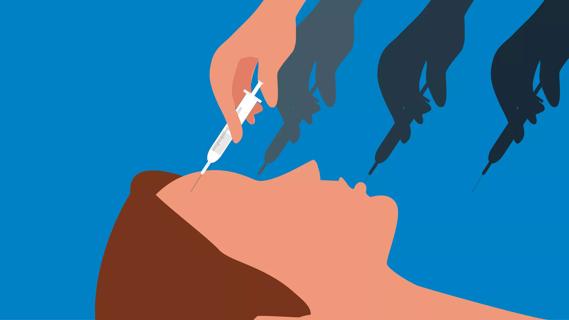These surgeries can help reshape your body after pregnancy

Having a baby is amazing. But it can change your body. If healthy eating and exercise haven’t helped you feel like yourself again, you might be thinking about a “mommy makeover.”
Advertisement
Cleveland Clinic is a non-profit academic medical center. Advertising on our site helps support our mission. We do not endorse non-Cleveland Clinic products or services. Policy
Although popular, they aren’t right for everyone. And surgery always has risks.
Plastic surgeon J. Vicente Poblete, MD, offers insight about the process and what you should consider before getting a mommy makeover.
A mommy makeover is a series of cosmetic surgeries that help reshape some of your physical features after giving birth. These procedures can include a tummy tuck, breast surgery (augmentation, lift, reduction or fat transfer), labiaplasty and/or liposuction.
When it comes to mommy makeovers, you can choose a single course of action or combine several for a more comprehensive approach. Some of the more common surgical options include:
During pregnancy, your belly (both your skin and its underlying structures) stretches to accommodate the growing fetus. Following pregnancy, your tummy area may feel looser than before.
If you’re uncomfortable with how your abdominal area looks or feels, a tummy tuck can help remove excess skin around your abdomen and tighten your abdominal muscles. It may even improve or remove stretch marks and C-section scars.
“Usually, the excess is a combination of fat and skin,” says Dr. Poblete. “The optimal procedure may be a lipo-abdominoplasty, with the benefits of both liposuction and tummy tuck for enhanced contouring.”
Advertisement
You may also want to consider some kind of breast enhancement as part of your mommy makeover:
“Combining a breast lift with augmentation is popular,” notes Dr. Poblete. “This combined approach is a more effective way of achieving a lifted appearance and more volume on the upper half of the breast.”
Liposuction is a popular mommy makeover option if you aren’t getting the results you want from healthy eating and exercise alone. For this approach, a cosmetic surgeon can remove fat from your abdomen, arms or thighs.
“Liposuction works best for localized fat deposits,” explains Dr. Poblete. “If the main concern is fat and there isn’t much excess skin, liposuction might be the optimal option.”
Labiaplasty is a surgical option that reduces the size of your labia minora, the skin folds that surround your urethra and vagina.
Maybe pregnancy hormones led to changes in this skin. Or maybe it was stretched in childbirth and hasn’t returned to its pre-pregnancy shape. When you have a lot of labial tissue, it can get pinched or tugged during exercise and sex, making those activities uncomfortable or painful. Removing extra tissue can help with comfort and appearance.
Your recovery time from a mommy makeover varies based on your age, health and the number of surgeries and treatments you have. For most cases, you can go home right away. Often, surgeons recommend no heavy lifting or strenuous exercise for the first four to six weeks.
After surgery, follow your doctor’s care instructions. Pay close attention to stitches and the areas that were affected during surgery. You may need some additional help in those first few weeks with daily activities around the house, or you may need to take a week or two off from work. So, make sure you plan accordingly.
If you’re thinking about having a mommy makeover, it’s important to set realistic expectations for yourself. Dr. Poblete suggests the following considerations:
Advertisement
The decision to get a mommy makeover shouldn’t be rushed, emphasizes Dr. Poblete. First, talk with your doctor about the risks, benefits and expected outcomes. From there, your surgeon can discuss a variety of options that fit your goals and help you feel more in tune with your physical body.
“Many people are very satisfied with the results,” he adds. “If it helps people feel good about their appearance, it can be a really satisfying experience.”
Advertisement
Advertisement
Learn more about our editorial process.
Advertisement

Allergic reactions and overprocessing are just a couple things to keep an eye out for

Yes, new fathers can experience mood changes after bringing baby home

Placenta consumption hasn’t been shown to have any health benefits, but it can cause infections

Intermittent fasting could impact your milk supply and energy levels, so it’s best to wait until you’ve weaned your baby from nursing

Ease into exercising, focus on sleep and follow a balanced diet — and be patient with yourself

Topical treatments — and even some cosmetic procedures — may help reduce the appearance of this crinkled-paper look

Most recommended precautions center around minimizing bruising or swelling

With repeat injections over time, you may be able to slow the development of new wrinkles

Start having sex about 72 hours before ovulation, then at least every other day during your fertile window

Attachment theory suggests that your earliest relationships shape connections throughout your life

It isn’t a recognized mental health disorder, but research shows that problematic social media use can negatively affect your mental health, self-esteem and sleep